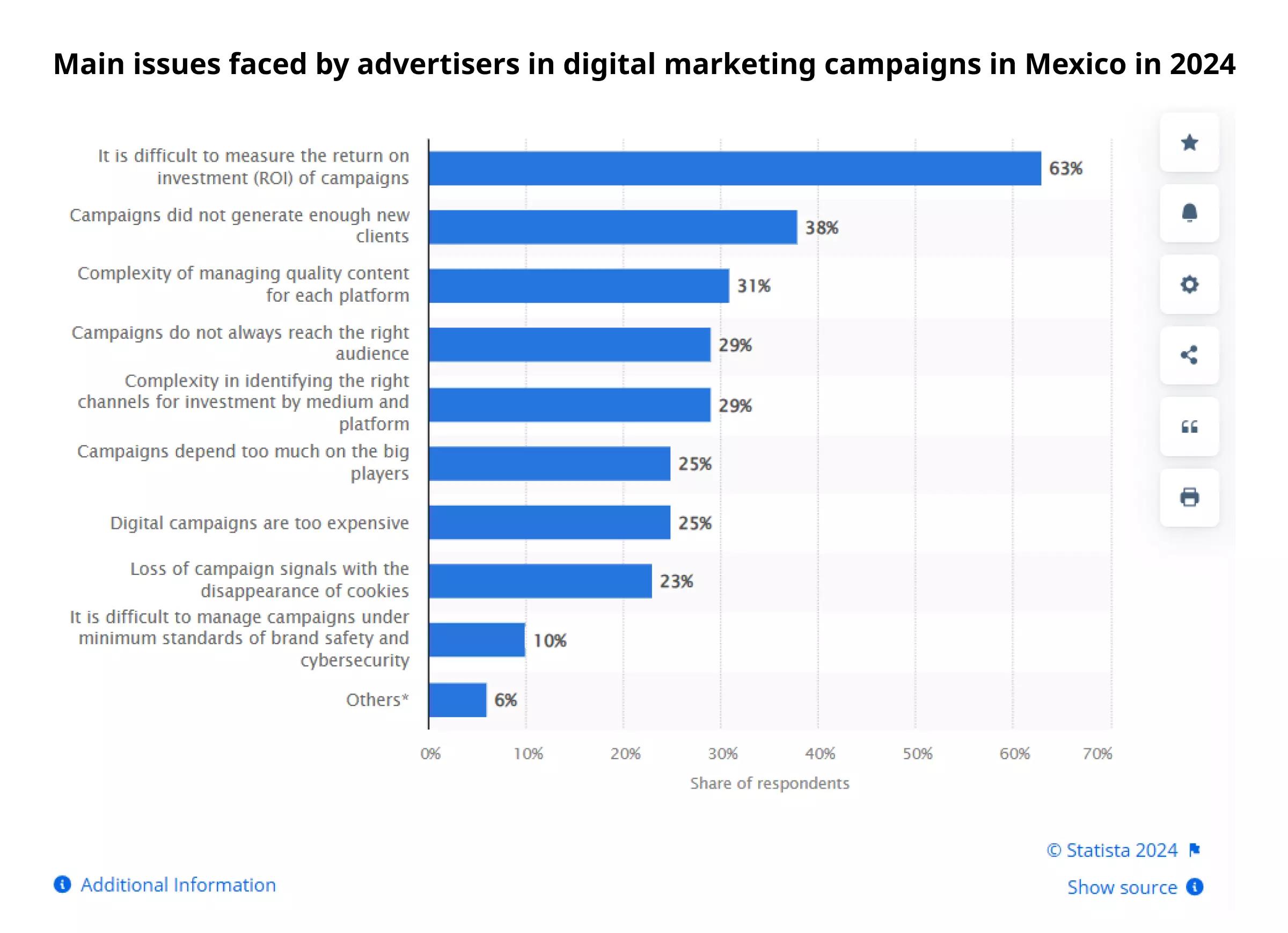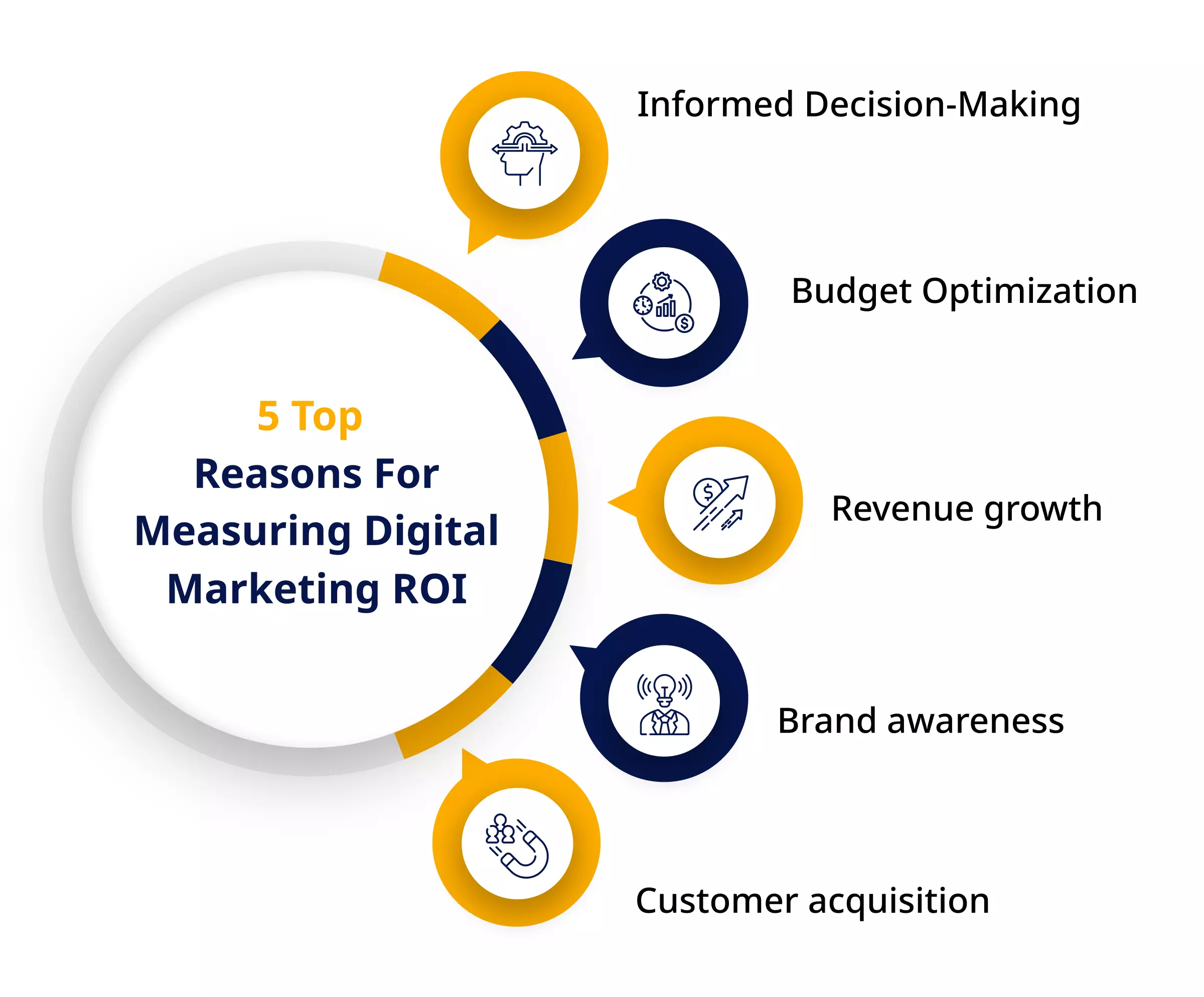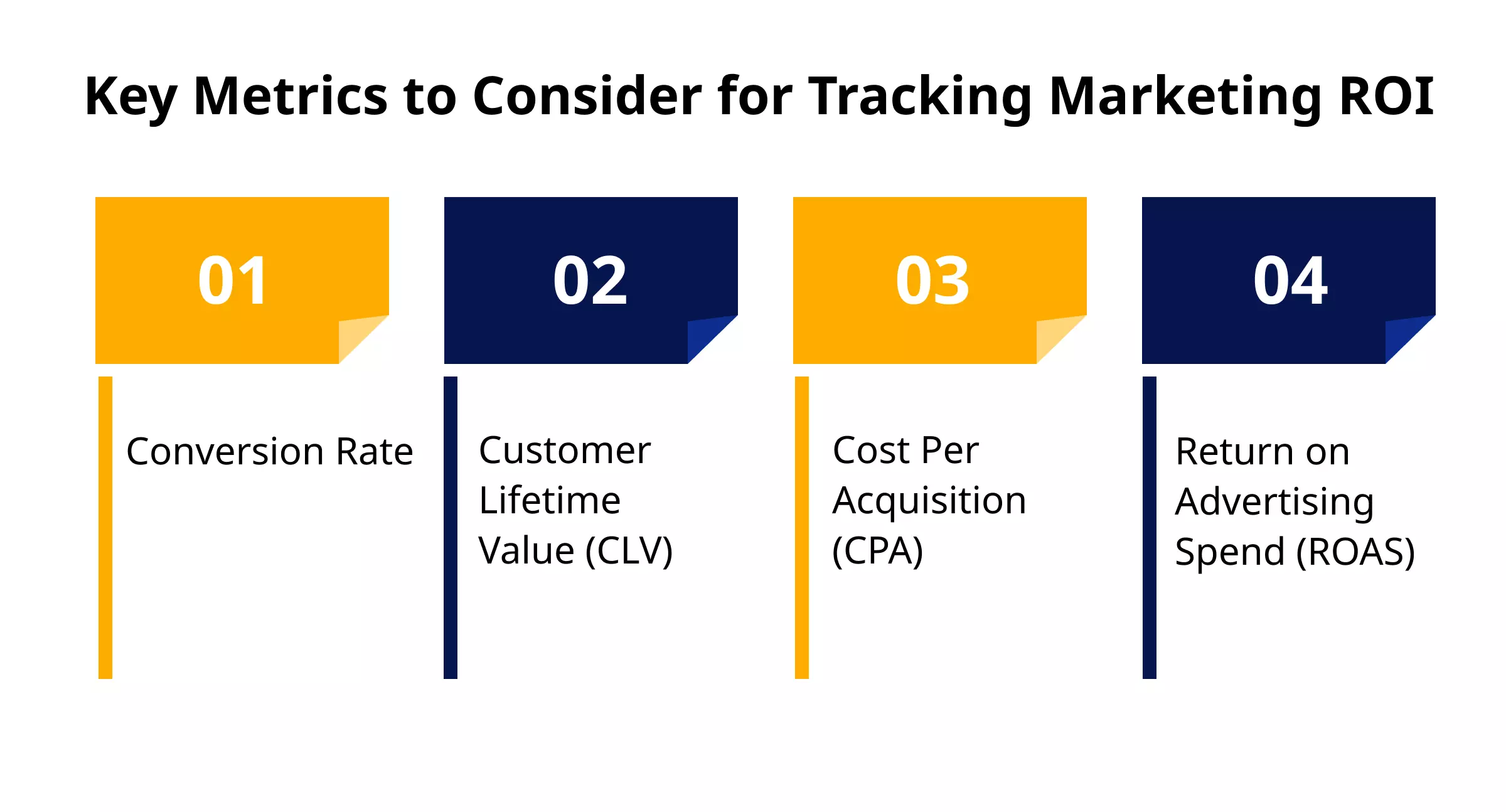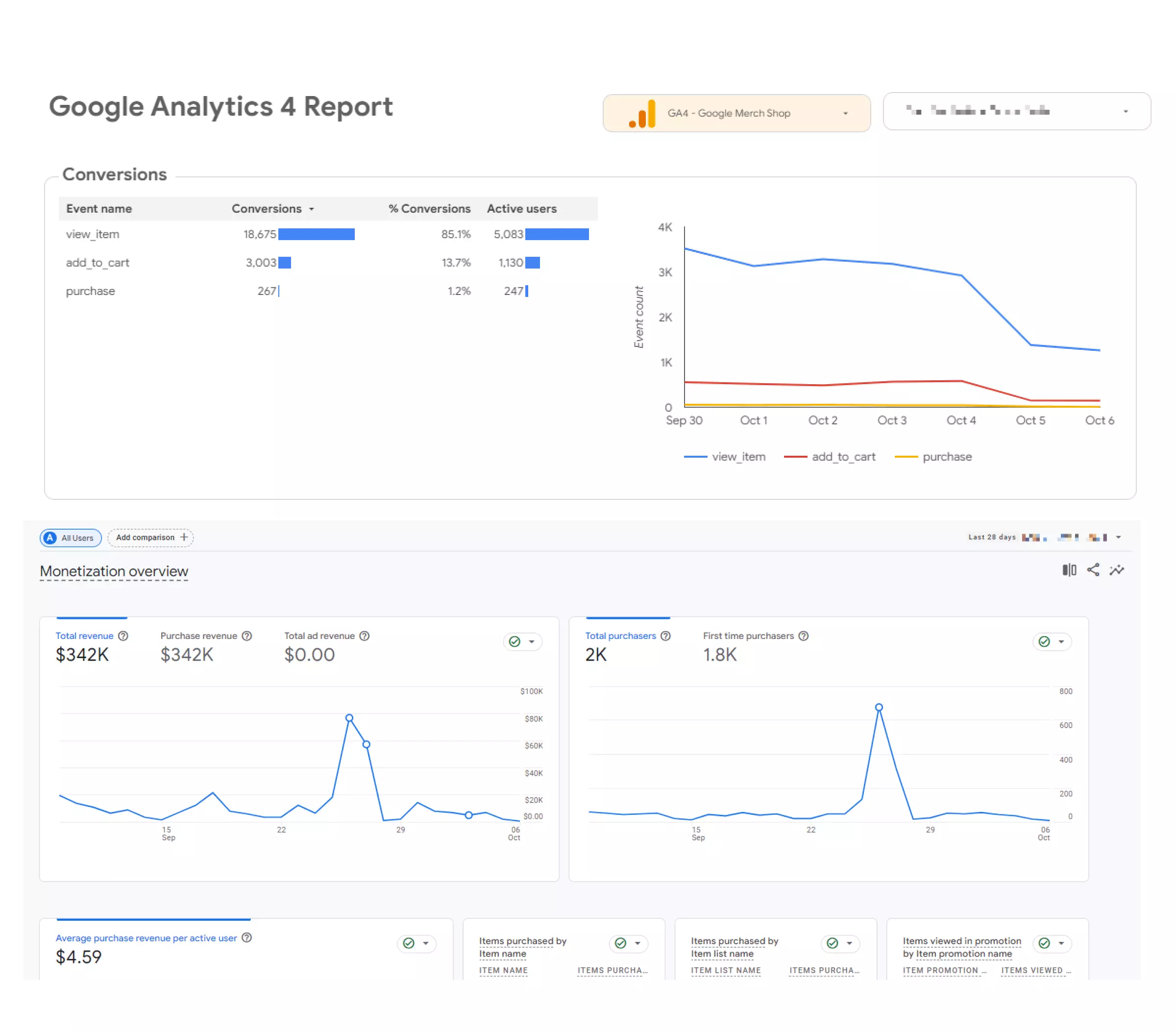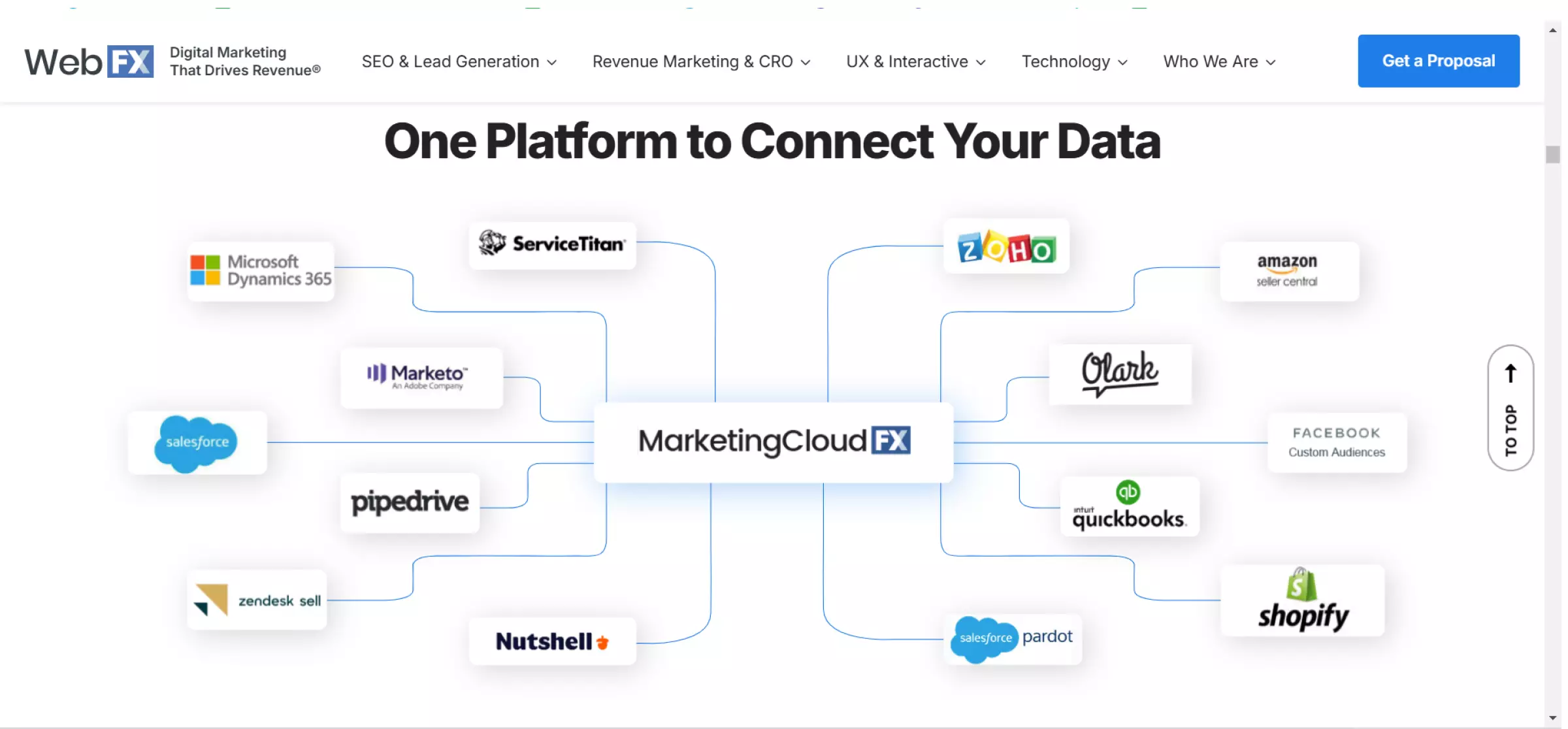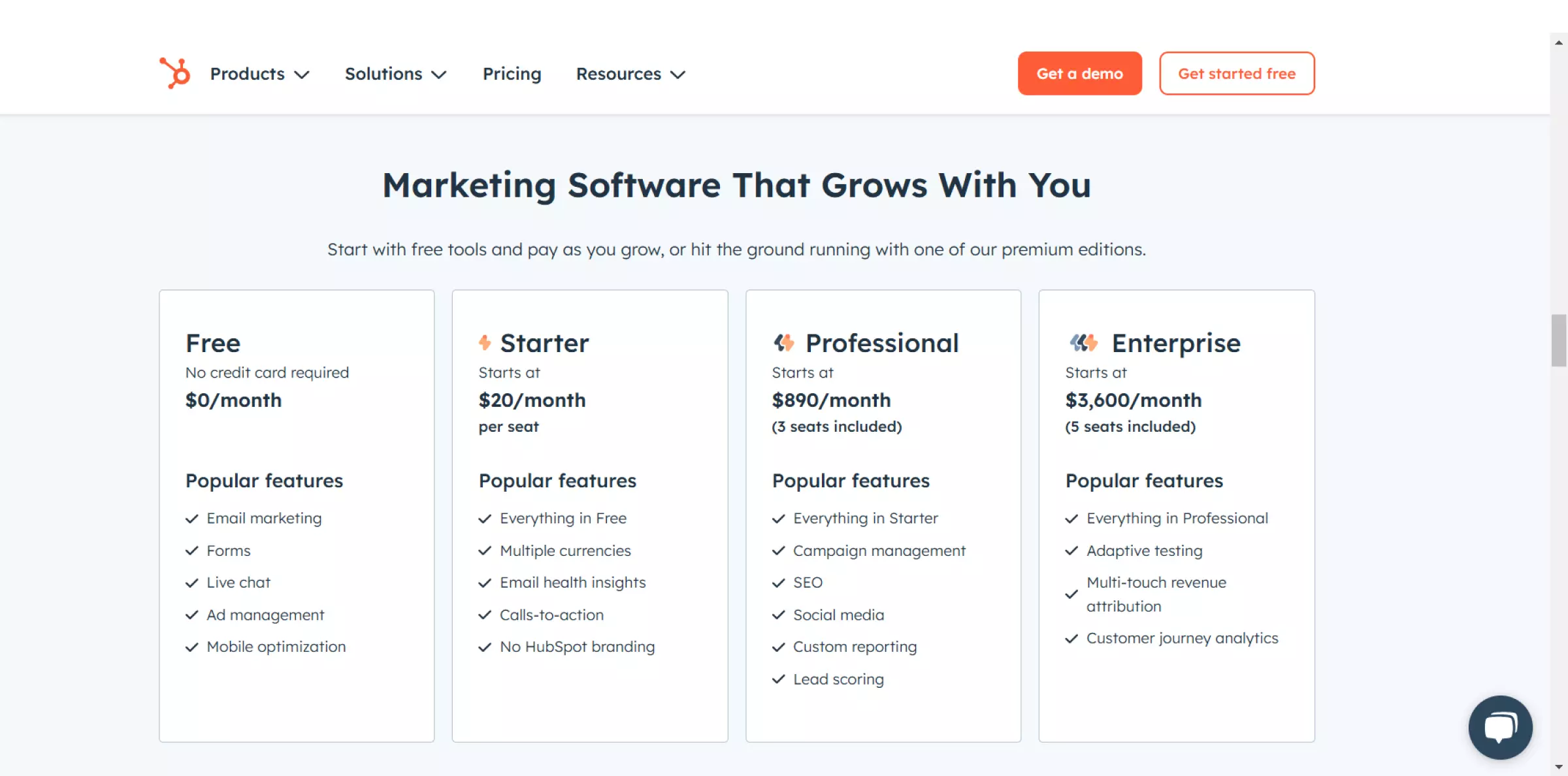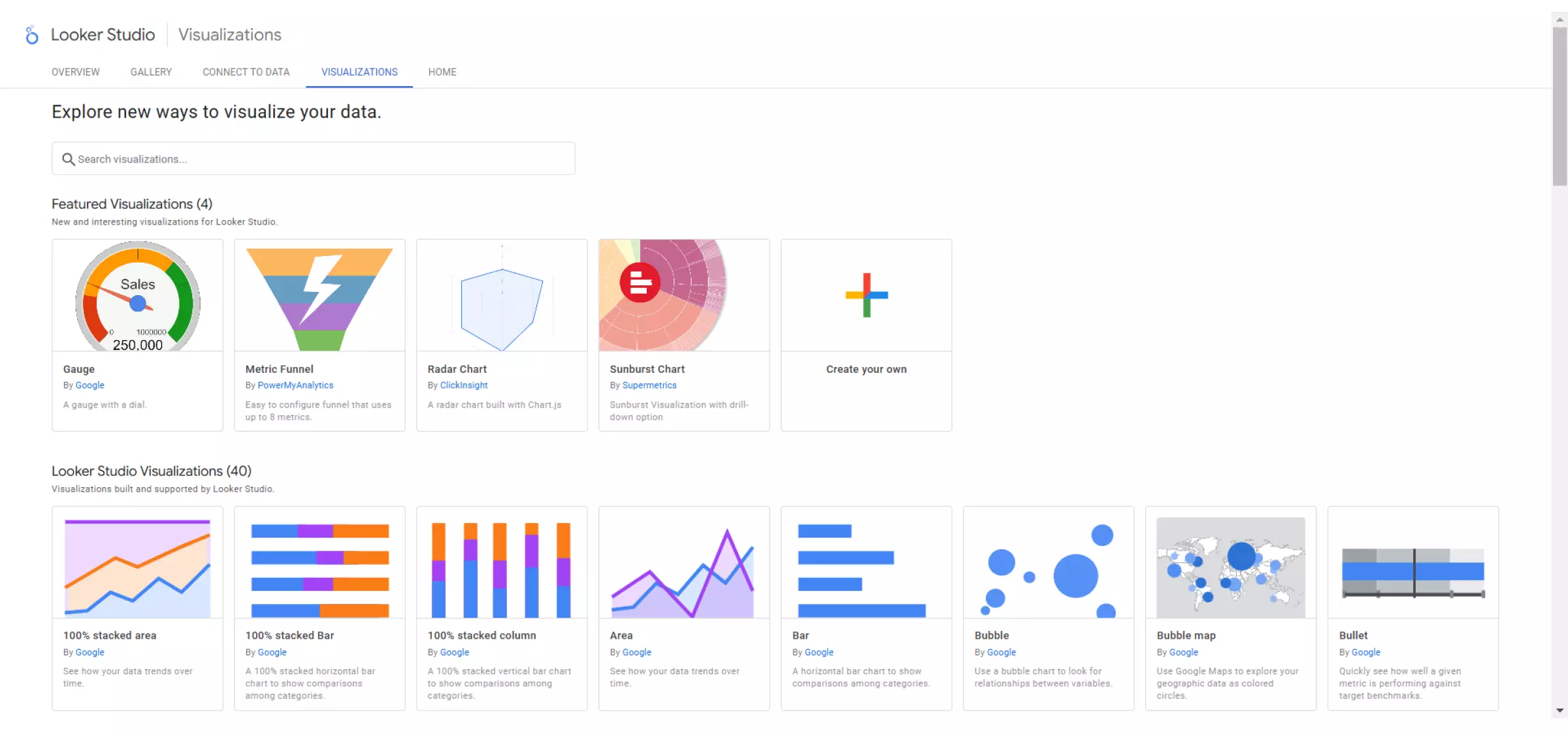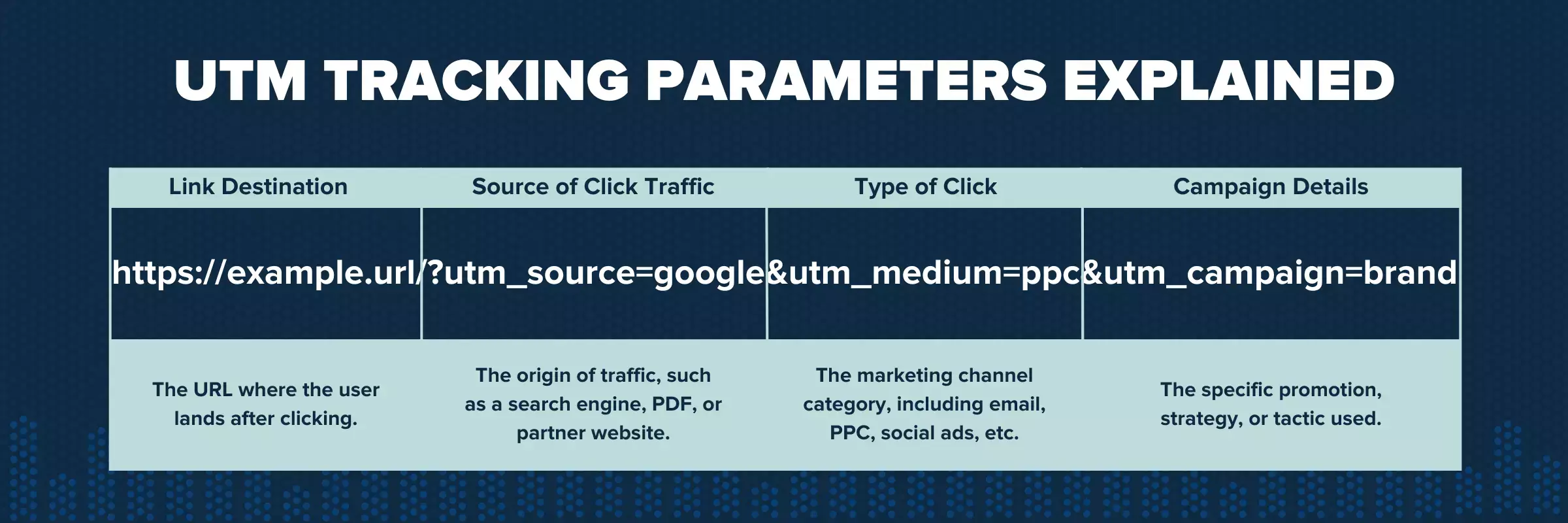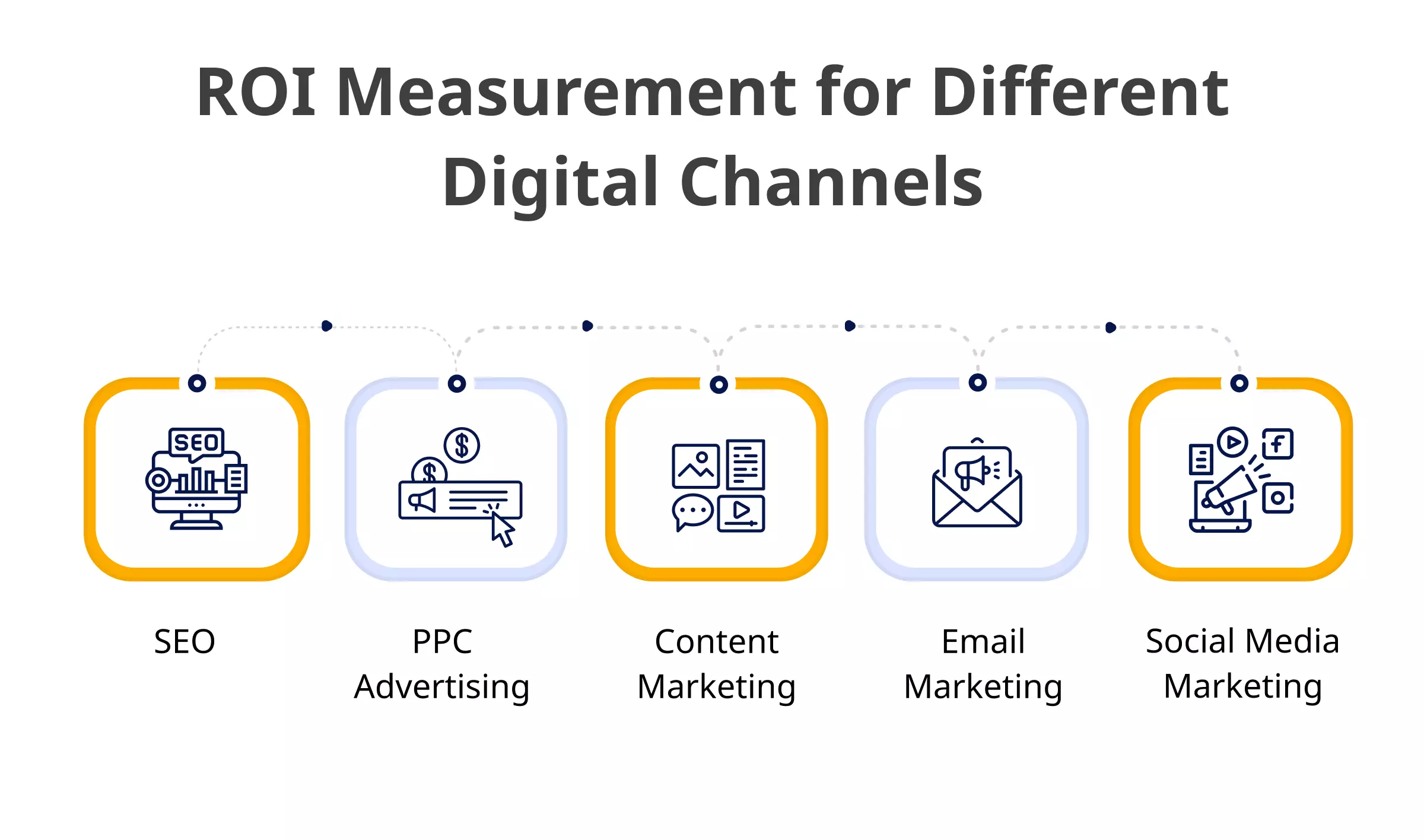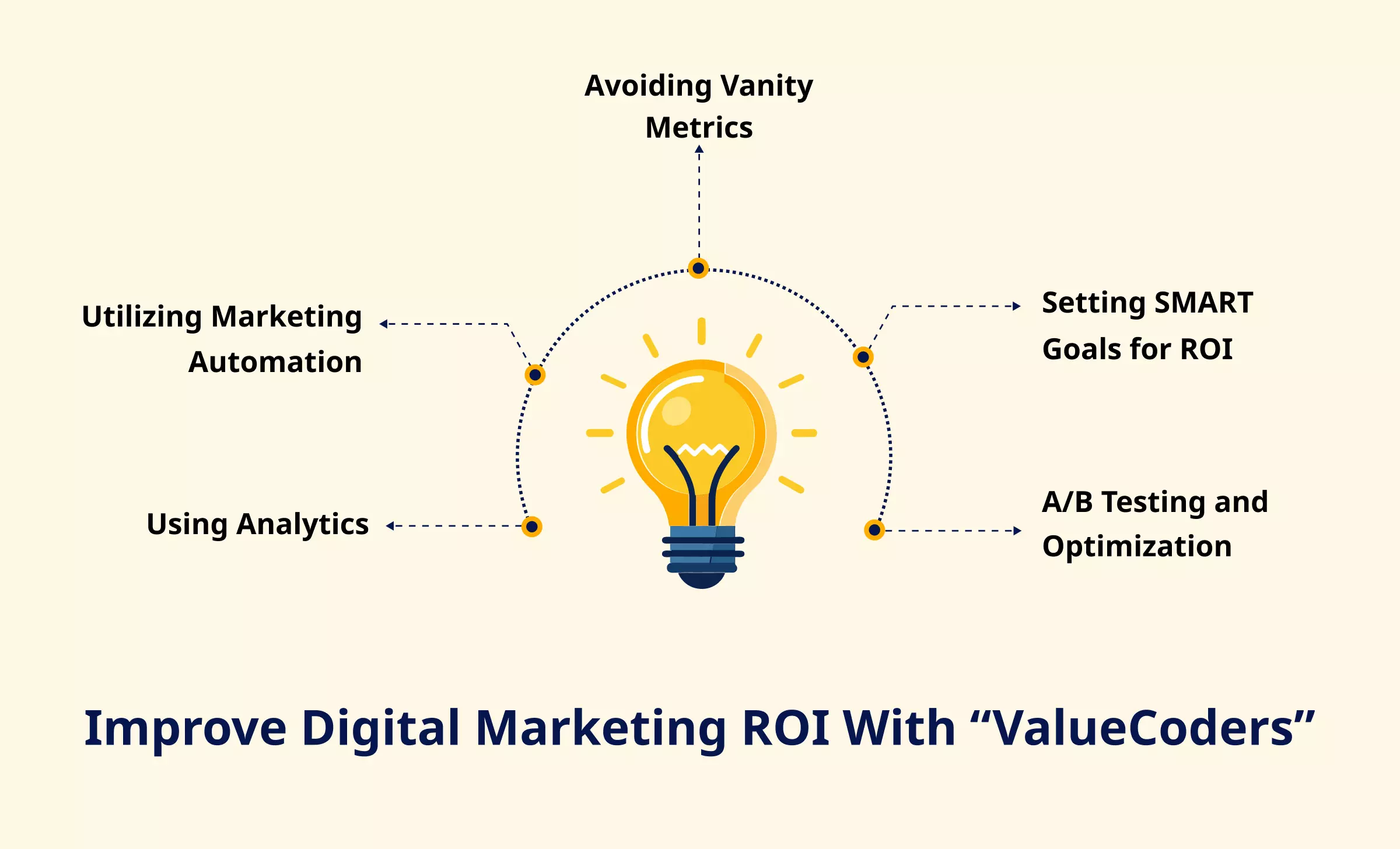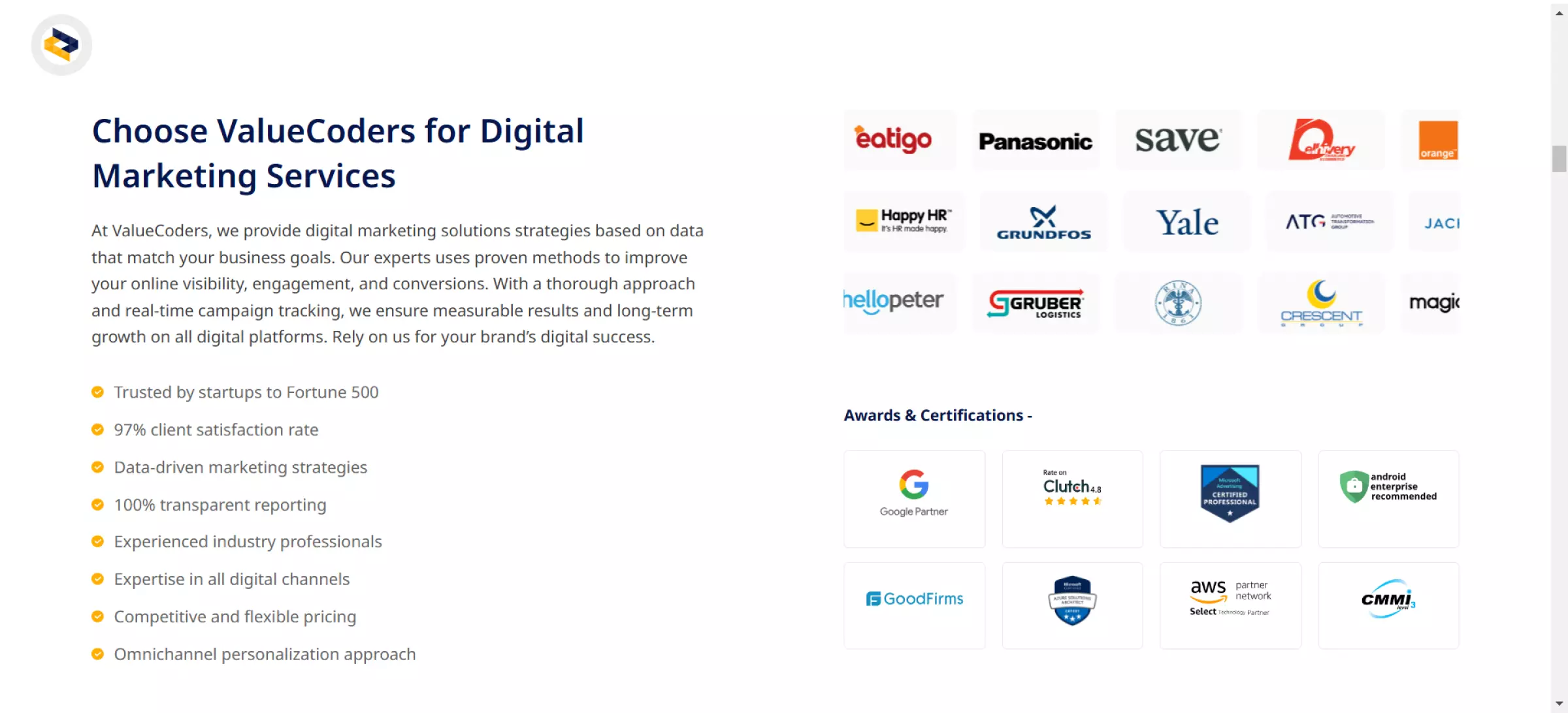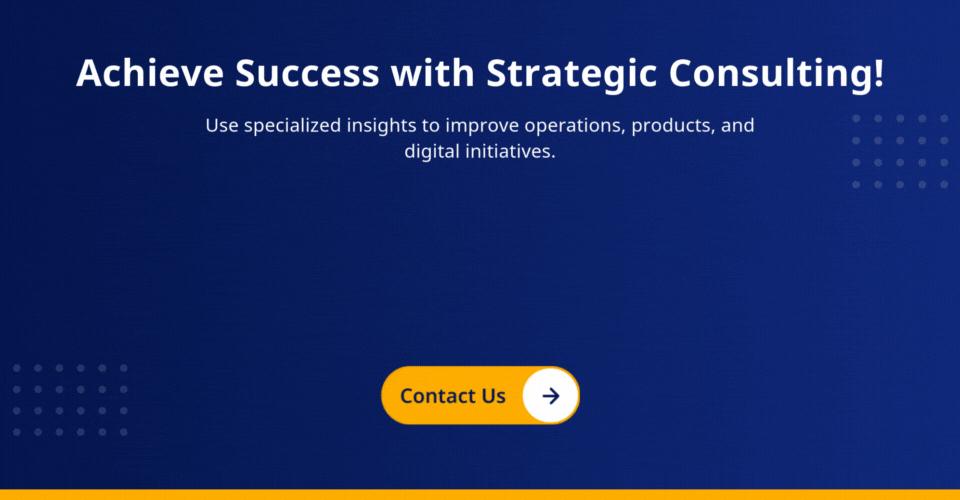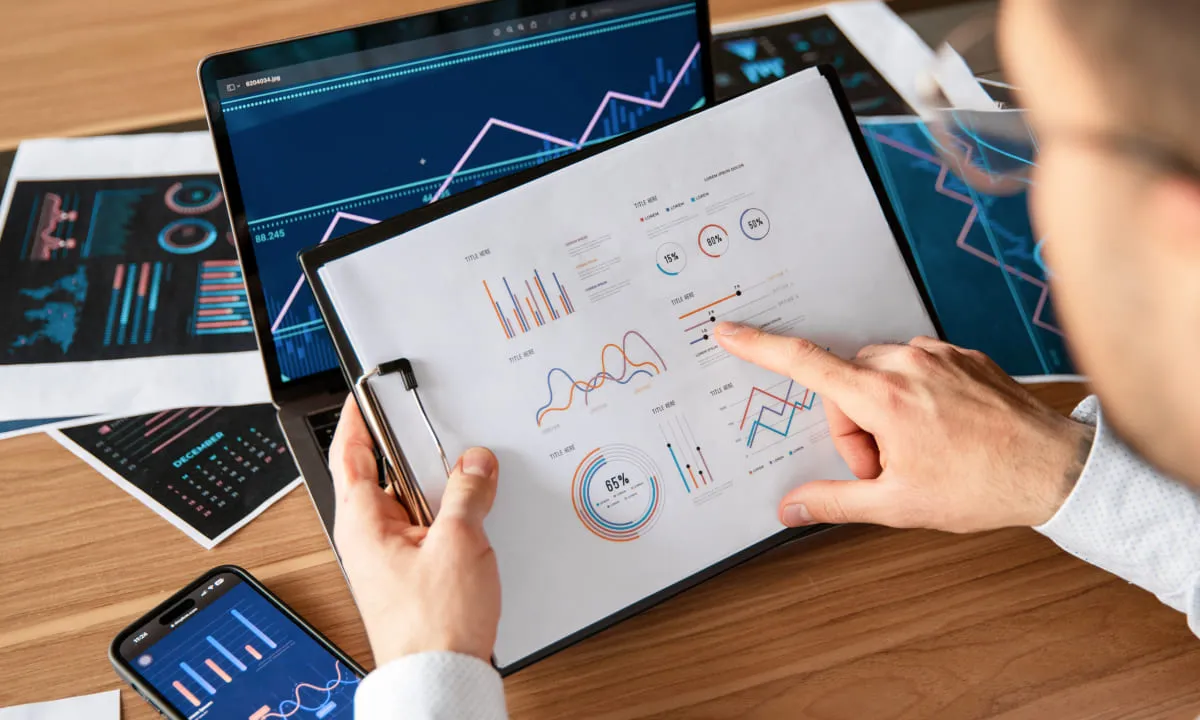A Statista survey shows that nearly two-thirds (or 63%) of responding advertisers found it difficult to measure the return on investment (ROI) in 2024. They marked it as a central problem when running digital marketing (DM) campaigns.
Running simple marketing campaigns is not enough in today’s competitive digital world. Modern businesses need to know if their efforts are paying off. This can be done with a digital marketing ROI check.
Measuring the ROI of digital marketing strategies explains to businesses not only how their strategies are working but, most importantly, identifies chances for improvement, so the dollar counts in marketing every time.
To measure if your digital marketing strategy really works, you need to calculate its ROI. But how do you do that?
This blog post provides everything you need to make data-driven decisions and maximize your marketing success, from understanding the best metrics to optimizing high-ROI strategies.
Common Challenges in Measuring Digital Marketing ROI
The following challenges are often faced by marketers while measuring their digital marketing ROI:
1. Attribution Issue
Customers interact with multiple touchpoints in digital marketing, as listed below, before purchasing anything.
- Social media
- Paid ads
- Organic search
Accurately attributing which channels or actions contribute most to conversions can be challenging. Without a solid attribution model, it becomes difficult to determine each channel’s true impact on ROI.
2. Data Tracking Errors
Effective ROI measurement relies on accurate data, but tracking setups are only sometimes precise. Minor errors in setting up tools like Google Analytics or tagging campaigns lead to data discrepancies.
These inaccuracies can distort insights and make it hard to evaluate the success of marketing initiatives or optimize campaigns effectively.
3. Time Lags
For businesses like B2B services with long sales cycles or expensive items, the sale sometimes comes quite later than the initial interaction with the marketing.
These time lags further complicate ROI calculations. This creates gaps in data and makes timely optimization challenging.
Boost campaign effectiveness with our tailored ROI strategies for better results.
Importance of Digital Marketing ROI
Digital marketing ROI measures the total revenue generated relative to marketing campaign costs. It represents how much profit (or loss) your marketing efforts generate for each penny spent.
Measuring digital marketing ROI helps you identify digital transformation strategies worth your investment. Using this, you can better allocate your budget, invest in channels with the highest ROI, and optimize underperforming areas.
Why is Measuring Digital Marketing ROI Important?
Measuring your digital marketing ROI brings you the following benefits:
1. Informed Decision-Making
Businesses make informed decisions on where to allocate resources. Without this data, marketing efforts may be based on guesswork rather than proven outcomes.
2. Budget Optimization
Digital transformation services help identify high-performing channels and strategies. Businesses can maximize returns and reduce wasteful spending.
3. Revenue Growth
Continuous monitoring of digital marketing ROI allows businesses to make alterations to the campaigns in real time. This ensures that they will not spend more than what they will earn while producing continuous revenue growth.
4. Brand Awareness
Metrics used for reach, engagements, and impressions provide an easy avenue to measure whether your brand’s visibility has indeed increased.
5. Customer Acquisition
Marketers can instead focus on strategies that deliver the highest return on investment by tracking cost per acquisition(CPA) and which channels are generating the most customers.
What Makes a “Good” ROI?
Benchmarks for a “good” digital marketing ROI vary widely. A 5:1 ratio is often considered solid, while a 10:1 ROI is exceptional.
However, these benchmarks can differ based on the specific industry, business size, and profit margins. For example, companies with high production costs would require a higher ROI to be profitable, while those with lower costs can find a 2:1 ROI sufficient for their growth.
Note: Don’t worry if you don’t understand this marketing jargon. We will discuss this later on in this article.
Get expert insights to prioritize high-impact, profitable channels for your business.
How to Calculate Digital Marketing ROI
Digital transformation drives businesses in 2025. The following methods are used to calculate and compare ROI in a way that aligns with their specific campaign goals and business context. Have a look at these methods below:
Standard ROI Formula
The most common formula for calculating digital marketing ROI is:
(Net Profit / Total Marketing Costs) x 100
This formula gives you the return percentage relative to your investment, making it easy to see if your campaigns are generating enough revenue to justify their costs.
For example, a campaign that costs $5,000 and brings a net profit of $25,000 has an ROI of 500%, indicating that it is a good investment.
Alternative Calculation Methods
While the standard ROI formula is widely used, some situations require different approaches.
- Forecasted ROI estimates potential ROI based on forecasted returns and expected marketing costs, making it useful for campaigns still in planning.
- When the goal is leads rather than direct sales, Forecasted ROI for lead generation considers the cost per lead and the conversion rate of leads to customers.
Using Ratios
Another way of expressing ROI is as a ratio, maybe 5:1. This ratio represents that for each dollar put into marketing, five dollars come back to the organization via revenue.
Ratios are helpful when comparing campaigns/strategies as they give an exact measurement of return on investment without any percentages.
For example, if a campaign’s ROI ratio is 3:1, for every dollar spent, it raises three dollars, which is very valuable in budgeting decisions.
Also read: Digital Transformation Essentials For Modern Businesses
How to Track Digital Marketing ROI?
The following metrics give a holistic view of ROI, which helps businesses understand the campaign’s effectiveness and long-term customer value.
Cost per Lead
It is used to determine the costs of generating each new lead. Marketers use this to determine whether their campaigns efficiently attract potential customers and adjust strategies to lower acquisition costs.
Lead Close Rate (Conversion Rate)
This measures the percentage of leads that convert into actual customers. A higher conversion rate represents high-quality leads generated and likely to make a purchase. On the other hand, a low rate signals a need to adjust targeting/optimizing the sales funnel.
Cost per Acquisition (CPA)
It measures the conversion rate of leads into actual customers. Good-quality leads with high conversion rates are more likely to be converted into purchases. Hence, a low conversion rate may indicate a probable necessity for readjusting targeting or perfecting the sales funnel.
Customer Lifetime Value (CLV)
CLV calculates the money a business believes it will make from one customer over its lifetime with the company. It helps firms make decisions to balance acquisition costs with lifetime revenue potential.
Other Relevant Metrics
Other metrics help measure campaign performance and user engagement:
- Click-through Rate (CTR): This factor measures the effectiveness of ads or emails by how often users click on them.
- Average Order Value (AOV): This is the average amount spent per order, enabling one to calculate the revenue implications of each conversion.
- Bounce Rate: It shows the percentage of visitors leaving a site after viewing only one page. It can give an idea of how much engagement and the content are effective.
Gain full visibility into campaign performance and ROI to refine your strategy.
Tools/Techniques for Measuring Digital Marketing ROI
The following tools and techniques give marketers a clearer picture of their original ROI. This also allows them to optimize spending and increase ROI in digital campaign.
Google Analytics 4
Google Analytics 4 (GA4) helps businesses measure user conversions, engagement, and ROI across different channels by offering comprehensive features.
You can also track essential events, like form submissions or purchases, and create custom attribution models to see which channels contribute the most to conversions.
MarketingCloudFX
It is a robust platform that tracks online and offline performance. It includes call tracking, lead scoring, and lead management for multichannel reporting.
HubSpot
Known for its CRM & marketing automation, HubSpot offers in-depth marketing analytics and ROI tracking capabilities. It tracks customer interactions and nurtures campaigns over time.
Looker Studio
Formerly known as Google Data Studio, Looker Studio is a free tool that allow businesses to create custom dashboards. They can be pulled from multiple sources-data such as Google Ads, Google Analytics, and many more.
Importance of UTM Parameters
UTM parameters track the effectiveness of particular campaigns. Using UTM codes in the URL allows for tracking very granular information about traffic, such as which email, ad, or social media post brought people to your site.
This micro-tracking gives marketers insight into campaign performance and lets them see what content drives the most engagement and conversions.
UTM feeds data directly into analytics tools like GA4. Therefore, one can be more accurate in attribution and make better-informed decisions.
How to Measure ROI for Different Digital Channels?
Measuring ROI in digital marketing is one of the necessary tasks. The following measurement strategies provide actionable insights through various channels for marketers to determine what works and fine-tune for better results.
1. SEO
According to Backlinko, 49% of businesses report that organic search brings the best marketing ROI.
SEO ROI focuses on understanding the impact of organic search on website traffic and conversions over time. Key metrics include
- Organic traffic growth
- Keyword rankings
- Conversion rates from organic search visitors
By tracking these, businesses can calculate the revenue generated from SEO efforts relative to the costs of SEO tools, content creation, and optimization. This helps companies to assess the long-term value of organic visibility.
2. PPC Advertising
According to GlobeNewswire, the global digital advertising and marketing market will reach $786.2 billion in 2026 at a CAGR of 13.9%.
Return on Ad Spend, in pay-per-click (PPC) advertising, is an important metric that is obtained by dividing the revenue by the cost of the ads.
For example, a ROAS of 5:1 means that five dollars are earned for every dollar spent. Tracking the following metrics clearly shows ad performance and whether campaigns achieve desired profitability. You may also hire PPC experts to get this done effectively.
- Cost per click (CPC)
- Click-through rate (CTR)
- Conversion rate
3. Content Marketing
According to Semrush, 55% of marketers say they create more content and post more often.
Hire content writers who can bring long-term ROI as valuable content attracts visitors well after publication. Key performance indicators (KPIs) include metrics like
- Page views
- Engagement (time on page, shares)
- Lead generation through gated content
- Call-to-action
Calculating content ROI involves comparing the revenue generated by content-driven conversions to the costs of content production. This provides insights into which topics or formats offer the highest return.
4. Email Marketing
According to a report by Litmus, the average ROI an email drives is $36 for every dollar spent.
Tracking open rates, click rates, and conversions is essential for measuring ROI in email marketing.
- Open rates reflect the effectiveness of subject lines
- Click rates indicate engagement with email content
- Conversions reveal how many recipients take the intended action.
By using these metrics for sales or lead generation, marketers can determine how well email campaigns contribute to revenue relative to the costs of email platforms and content creation.
5. Social Media Marketing
According to a report by Econsultancy, 73% of luxury brands measure influencer success through web traffic. Social media ROI is best measured by tracking metrics like
- Engagement (likes, comments, shares)
- Reach
- Conversion rates from social campaigns
Businesses use UTM parameters to analyze whether social media interactions translate into website visits, leads, or sales. Hire SMO experts who determine the return on investment for social and assesses how social campaigns contribute to the overall bottom line.
Improve every ad dollar with our proven ROI enhancement tactics.
Strategies to Improve Digital Marketing ROI
The following are the powerful methods used to improve digital marketing performance. They help businesses increase the effectiveness and profitability of their marketing efforts.
Using Analytics
Analytics allows businesses to make informed, data-driven decisions that have far-reaching effects on campaign effectiveness.
Analyzing key metrics helps you determine which channels perform best, understand your customers’ behavior, and identify areas for improvement; this leads to a much more focused and profitable marketing strategy.
Setting SMART Goals for ROI
Using the SMART criteria – Specific, Measurable, Achievable, Relevant, and Time-bound-helps marketers set clear actionable goals for ROI improvements.
For example, rather than the vague objective “increase leads,” a SMART goal might be “increase qualified leads by 20% over the next quarter,” setting a defined path to measure and celebrate success.
Avoiding Vanity Metrics
Digital marketing metrics and KPIs such as followers, impressions, and page views are superficially impressive but do not necessarily reflect business outcomes.
Instead, focusing on actionable metrics such as conversion rate, customer acquisition cost, and customer lifetime value helps marketers watch the actual impact on ROI and make adjustments that matter for the bottom line.
Utilizing Marketing Automation
Automation tools streamline repetitive tasks, like email marketing and lead nurturing, saving time and reducing costs.
Using automation, marketers can reach the right audience segments with personalized content and responses at optimal times, enhancing efficiency and engagement while driving higher ROI from each campaign.
A/B Testing and Optimization
Testing different campaign elements, such as headlines, ad copy, or images, helps marketers identify which work best.
A/B testing is very effective for helping optimize campaigns based on performance as it enhances conversion rates and ROI.
Discover our data-backed techniques to elevate your marketing returns.
Improve Digital Marketing ROI With ValueCoders
Since 2004, ValueCoders has been India’s leading digital marketing services company, serving 2,500+ clients globally. With us, businesses gain access to the expertise, tools, and strategies needed to drive a successful digital marketing ROI.
We are a CMMI level 3 certified company that ensures every campaign contributes effectively to growth and profitability. We also provide reliable digital consulting services to our global clients.
- We identify high-performing channels and refine strategies helps maximize returns on each marketing dollar spent.
- We use advanced tools to track and report all digital marketing activities precisely.
- Hire digital marketing experts who tailor digital marketing strategies to fit each client’s goals and target audience
- We offer marketing automation tools to streamline repetitive tasks like lead nurturing, email marketing, and ad optimization.
Also read: Digitize To Succeed: How MSMEs Can Benefit From Digital Business Practices
Final Words
Mastering your digital marketing ROI will lead to a clear path to business growth and to making every marketing effort count.
By tracking the correct metrics, using effective tools, and continually refining your marketing strategies, you can see exactly where your investments generate profit and where there is a room to boost results.
As you gain more insights and optimize your approach, your marketing will become more efficient and impactful. Moreover, you can contact us at ValueCoders (a popular AI for Marketing & Advertising solutions company in India) as we ensure your marketing efforts drive meaningful engagement and sustainable business growth!


